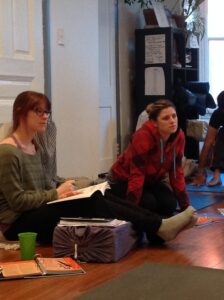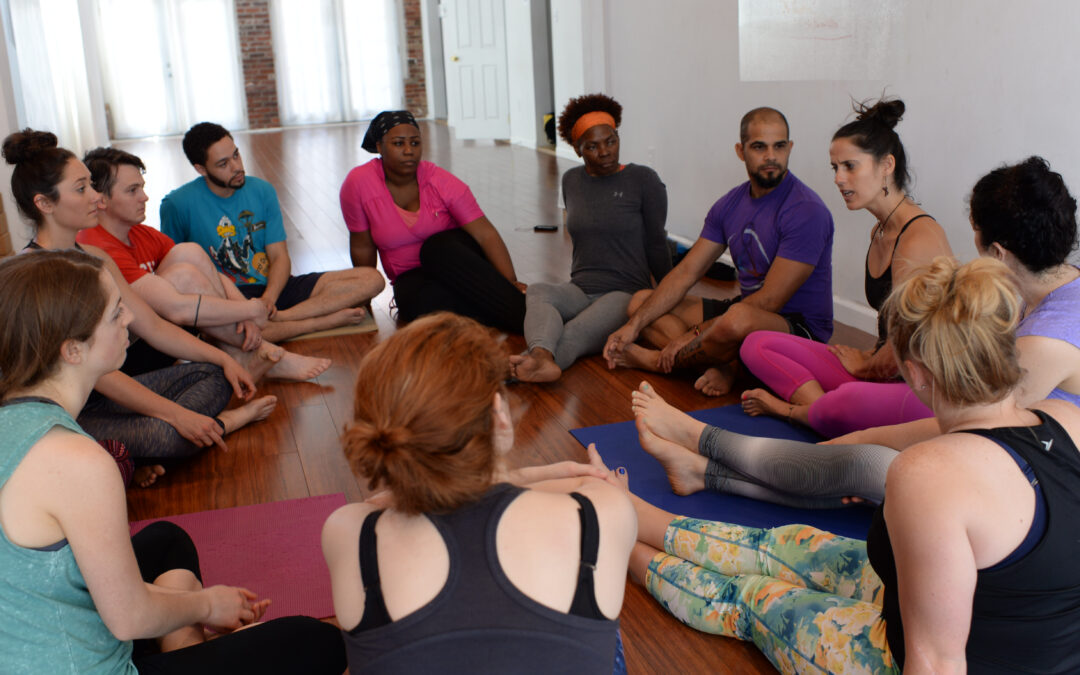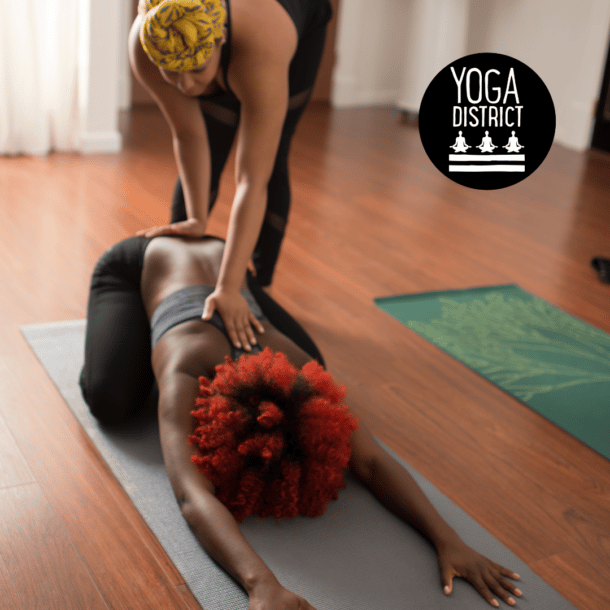If you’ve ever wondered about yoga philosophy and how we approach it in our teacher trainings, take a peak with Jasmine’s discussion of a central teaching from the Yoga Sutras. Find out how trying really hard and being without a care relate to your yoga practice. You might be surprised that yoga also traditionally points us towards being present, which requires a bit more faith and receptivity than we might be used to.
the present + practice + non-attachment = yoga
In the Yoga Sutras of Patanjali it is said that the yogic state is achieved in the present through practice and non-attachment. We spend a good amount of time on this teaching in our teacher training. Training participants usually have no issues with the idea that practice and effort will get them to the yogic state.

It’s the non-attachment piece is the part that usually prompts more questions and furrowed brows. I explain that non-attachment isn’t detachment / pushing something away. It’s more like being OK with however the cookie crumbles. In a non-attached state, someone might say “there that is” if things go well. Just the same, they would say “there that is” if things fall apart. It’s serenity and equanimity, perhaps confusable with indifference or neutrality. It prompts us to gather a bit of faith that whatever happens is just the way it needs to be. Like my teacher Dharma Mittra says, “everything is perfect.”


You might think that this manifestation of non-attachment would lead us to blindly accept whatever life throws our way, to the point of tolerating any abuse. Thankfully, the “practice” part of the above formula is what saves us. The Yoga Sutras explains that practice involves making extreme efforts toward stable tranquility. That means we have to work hard to cultivate peace, rather than accept avoidable violence. Our efforts are tempered with non-attachment, and our non-attachment is enlivened by our efforts. The tranquility we’re going for here isn’t passing peace. It’s more like a sustainable resilience.
The third part of the equation is about being present, mentioned in the first sutra. When I took a training with Mukunda Stiles, a devotee to Swami Muktananda, he explained the first sutra is a big deal. It isn’t just a traditional introduction, announcing that the text is exposing yoga methods in the present. Rather, it’s the key to making all the later sutras unlock. It makes sense to me – when we are living in the present we don’t judge ourselves or others by their past or our past associations with similar experiences. We are without bias, and don’t look to settle old scores. Looking at the future isn’t much better than looking at the past. The future usually is wrapped up in fear of a terrible future and attachment to escaping future suffering. So, the present is the only place for the yogi to reside.
In sum, to achieve the yogic state we need to work hard towards steady calmness, yet simultaneously let it all go and live in the present.


